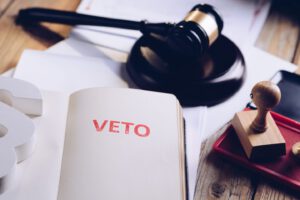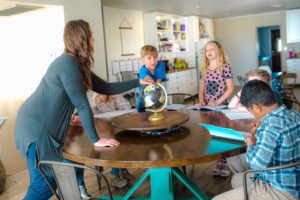A parent’s story: How education savings accounts are changing lives in our family
(reimaginED) – When our son Thomas was about to move to first grade, his teacher told us he should repeat kindergarten. Being a teacher myself, and trusting the education system, I agreed without…

(reimaginED) – When our son Thomas was about to move to first grade, his teacher told us he should repeat kindergarten. Being a teacher myself, and trusting the education system, I agreed without asking any questions.
But three weeks into Thomas’ second year of kindergarten, I told my husband that beyond Thomas’ speech difficulties, for which he was receiving services, something was not right. We decided to have him evaluated and learned he was struggling with severe dyslexia, attention deficit disorder, and anxiety.
We went to the school with this information and assumed Thomas would receive appropriate additional services and that everything would be fine. That was not the case.
School officials disagreed with the doctor’s recommendation that Thomas be taught using the Orton-Gillingham approach, arguing it was not what he needed. They said he would be fine, adding that Thomas was not the first dyslexic child they had enrolled.
I had not intended to continue my education after receiving my teacher certification, but to give Thomas a fighting chance, I returned and earned a master’s degree so I could help him myself. I asked the school district to let me come into Thomas’ classroom and be a provider during the school day so he wouldn’t have to spend so many hours on homework, but the administrators turned me down.
We had no choice but to begin doing our own research. That’s when we found Empower Mississippi, a grassroots movement that helps students with special needs and families like ours. Empower Mississippi puts people over divisive politics and works to give voice and hope, educating, engaging, and electing Mississippians dedicated to removing barriers to opportunity.
We learned about a state scholarship program for students with dyslexia, but soon found out access to it was limited. Then we learned that the Equal Opportunity for Students with Special Needs Act, enacted by the Mississippi Legislature during the 2015 legislative session, had created the Education Scholarship Program.
This education savings account program was designed to give parents of children with special needs the option of withdrawing their child from the public school system and receiving a designated amount of funds to help defray the cost of private school tuition and other allowable educational activities.
In the meantime, we found a local independent school, Bayou Academy. The teachers welcomed the help I was credentialed to provide to special needs children – and they welcomed Thomas as well. Even though we were still on the waiting list for the ESA, we moved Thomas to the academy.
A few months later, when I got the letter saying Thomas had been approved for the ESA, I cried and cried.
Eventually, our younger son, Henry, also was diagnosed with dyslexia. This time, we knew what to do. We applied for an ESA for him, he went on the waiting list, and was approved.
It was stunning to us that no one provides parents with information about these opportunities. We, like many families, had to find our own path. Because of that, it’s become our mission to help other families by sharing our story.
It’s been three years since Thomas transferred to Bayou Academy and he’s now at the point where he is successful in the classroom. He enjoys going to school and he has a host of friends.
Watching his smiling face, we are convinced that families should have the right to choose the best educational setting for their child. Income should not be a barrier. In any other sector, people have a choice. They also should be able to choose when it comes to their child’s education.
We are grateful to Empower Mississippi, the Education Scholarship Program, and Bayou Academy.
This first-person essay from Mississippi mother Leah Ferretti was adapted from the American Federation for Children’s Voices for Choice website.
This article originally appeared at reimaginED.



